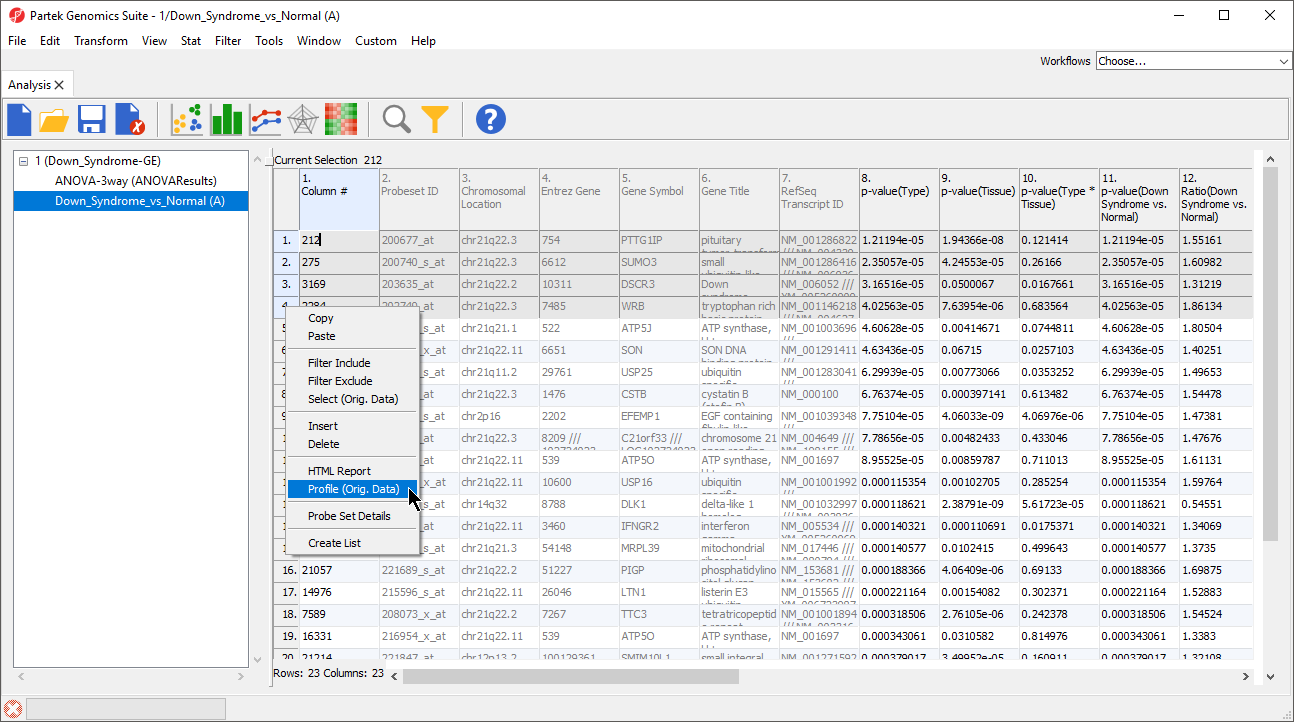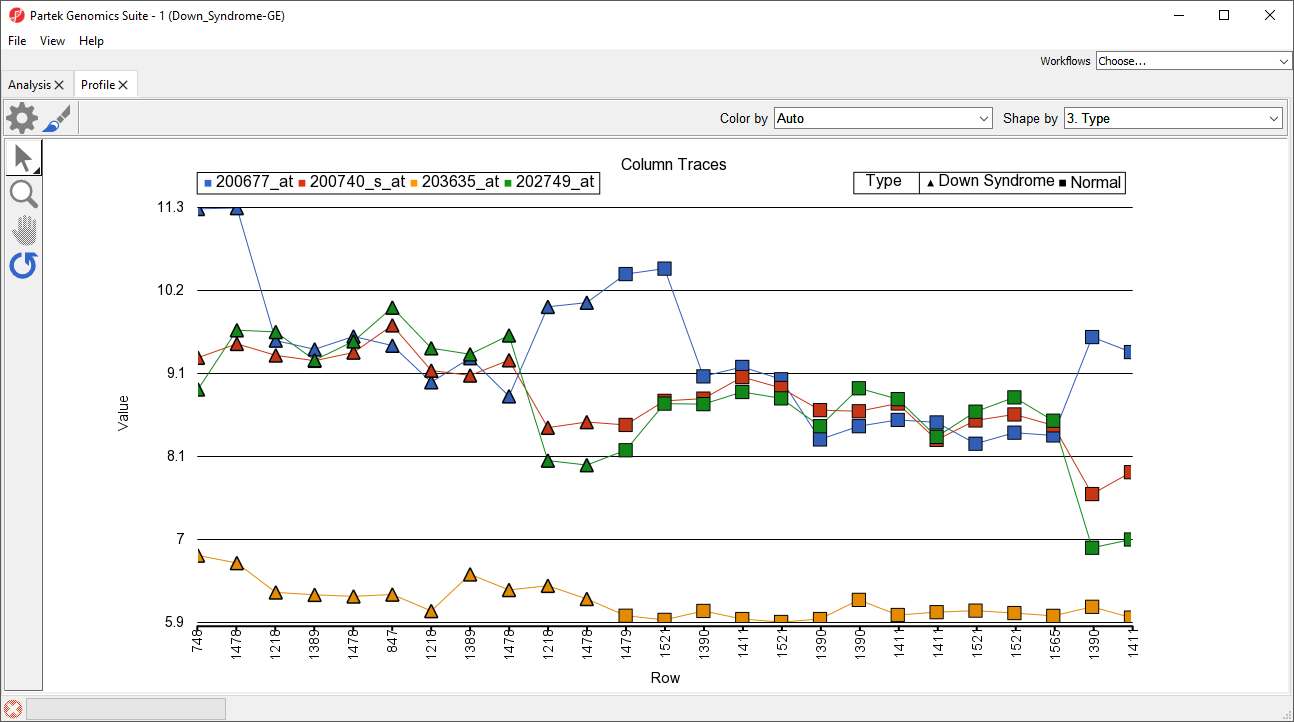| Table of Contents |
|---|
| maxLevel | 2 |
|---|
| minLevel | 2 |
|---|
| exclude | Additional Assistance |
|---|
|
In contrast to the dot plot which shows one probe(set)/gene per plot, the profile plot is used to visualize how the intensity values from multiple genes compare across all samples.
We will invoke a Profile Plot from a gene list child spreadsheet with genes on rows.
- Select the rows to be visualized
- Right-click on a row header of one of the selected rows
- Select Profile Plot (Orig. Data) from the pop-up menu (Figure 1)
| Numbered figure captions |
|---|
| SubtitleText | Selecting Profile Plot for selected rows |
|---|
| AnchorName | Calling Profile Plot |
|---|
|

|
The profile plot will be displayed in a new tab (Figure 2). Lines are probe(sets)/genes and columns are rows/samples from the parent spreadsheet.
| Numbered figure captions |
|---|
| SubtitleText | Basic profile plot. Each line represents a different prob(set)/gene; each column represents a sample from the parent spreadsheet |
|---|
| AnchorName | Profile Plot |
|---|
|

|
A basic profile plot will likely need customization. The plot configuration, properties, and control options are the same as in Dot Plot. We will illustrate a few modifications here.
We can change the row labels to show each sample ID.
- Select (
 )
) - Select the Axes tab
- Set Grid to 1
- Select Rotate X-Axis Labels and set to 90 degrees (rotates counter-clockwise)
- Set Label Format to Column and select 5. Subject
We can add symbols to show which group each sample belongs to.
- From the Shape by drop-down menu, select 3.Type
- Select OK
Symbols have now been added to each profile line plot (Figure 3).
| Numbered figure captions |
|---|
| SubtitleText | The profile plot can be modified to facilitate analysis or presentation |
|---|
| AnchorName | Modified Profile Plot |
|---|
|

|


